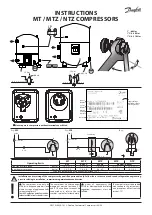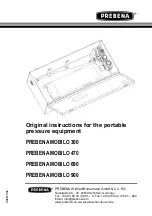
In a Danfoss CH scroll compressor, the
compression is performed by two scroll elements
located in the upper part of the compressor.
Suction gas enters the compressor at the suction
connection. As all of the gas flows around and
through the electrical motor, thus ensuring
complete motor cooling in all applications, oil
droplets separate and fall into the oil sump.
After exiting the electrical motor, the gas enters
the scroll elements where compression takes
place. Ultimately, the discharge gas leaves the
compressor at the discharge connection.
The figure below illustrates the entire
compression process. The centre of the orbiting
scroll (in grey) traces a circular path around
the centre of the fixed scroll (in black). This
movement creates symmetrical compression
pockets between the two scroll elements.
Low-pressure suction gas is trapped within
each crescent-shaped pocket as it gets formed;
continuous motion of the orbiting scroll serves
to seal the pocket, which decreases in volume
as the pocket moves towards the center of the
scroll set increasing the gas pressure. Maximum
compression is achieved once a pocket reaches
the center where the discharge port is located;
this stage occurs after three complete orbits.
Compression is a continuous process: the
scroll movement is suction, compression and
discharge all at the same time.
SUCTION
COMPRESSION
DISCHARGE
4
FRCC.PC.026.A4.02
Scroll compression principle
Application Guidelines





































